Blue Tongue Skink vs. Bearded Dragon: What are the Differences? A Complete Guide
If you’re thinking about adopting a lizard as a pet, you might be wondering which species of lizard is best: the Blue Tongue Skink or the Bearded Dragon? These lizards are both popular pets, but they have a few major distinctions. We’ll compare and contrast these two lizards in depth in this post so you can make an informed decision about which one is best for you.
Physical Description
There are several significant distinctions between these two lizard species. For starters, Blue-tongues have blue tongues while Bearded Dragons do not, as their name suggests. In addition, the tails of Blue-tongues are considerably longer than those of Bearded Dragons. Finally, while both animals have spikes running down their backs, the spikes on a blue tongue skink are shorter and not as sharp as the spikes on a beardie.
Size
The Blue Tongue Skink may reach a length of 18 to 24 inches. Some have a height of up to 30 inches. The average length of a Bearded Dragon is between 16 and 24 inches. [1]
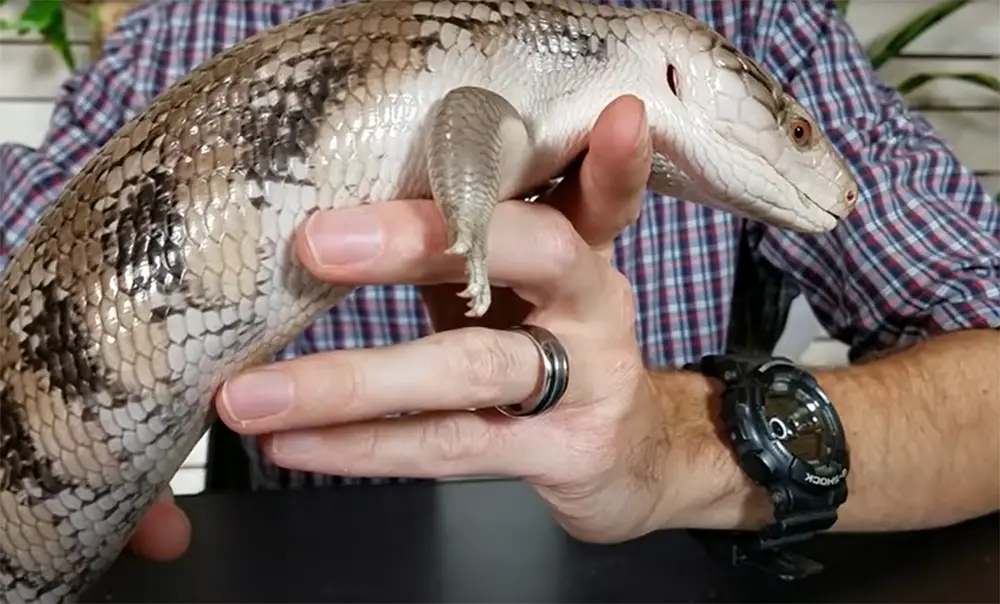
As you can see, the size is not that different.
Weight
The Blue-tongues weighs about 300-550 grams while the Bearded Dragon weighs about 400-550 grams. [2]
Lifespan
Blueys generally have a longer lifespan than Beardies. Blue-tongues can live up to 20 years, whereas Beardies usually only survive for 12-15 years. If you want to adopt a pet for many years, the Blue Tongue Skink is the better choice.
Habitat
Blue-tongue is a semi-arboreal lizard that is native to Australia, Indonesia, and New Guinea. They can be found in dry open woodlands, forests, and savannas. Blueys prefer to live in areas with dense vegetation and plenty of places to hide.
Beardies are desert-dwelling lizards that are native to Australia. They can be found in arid, rocky habitats such as scrubland and spinifex grasslands. Beardies will redden their bodies in the sun on rocks or logs at day to maintain a constant body temperature.
Both blue-tongues and Beardies will retire to burrows or crannies at night.
Humidity, temperature and heating
Ectothermic reptiles, such as Blue-tongue and Beardies, rely on external sources of heat to maintain their body temperature. In the wild, Blue-tongues skinks will bask in the sun to warm up their bodies. Beardies will also basking in the sun, but they will also move between shady and sunny areas to regulate their body temperature.
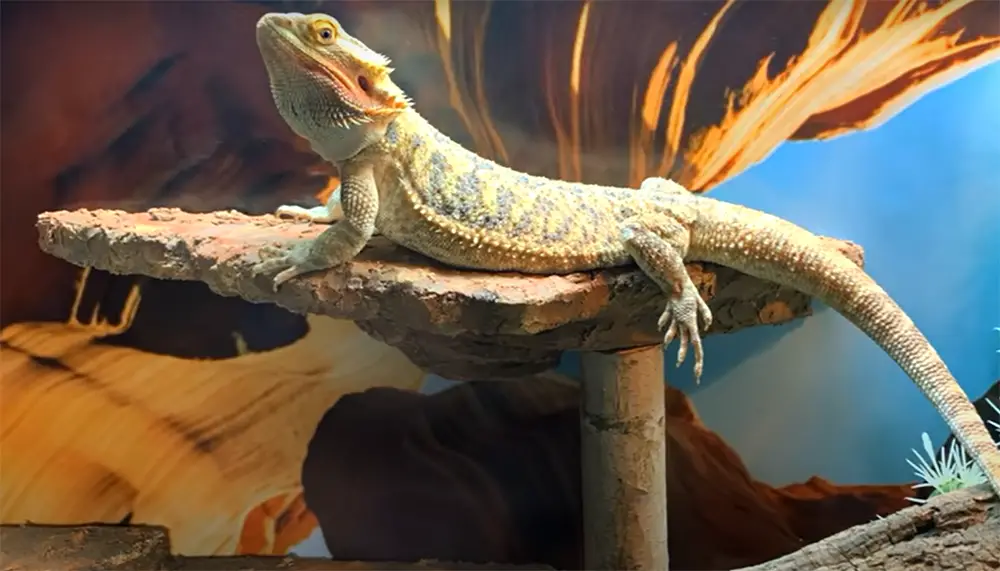
You will also need to provide a source of UVB light for your lizard. This can be in the form of a tube, compact, or coil bulb. The UVB light is important for your lizard’s health as it helps them to absorb calcium.
Blueys are more tolerant of higher humidity levels than Beardies and can even spend time in areas with 100% humidity. Beardies, on the other hand, prefer lower humidity levels and should not be kept in an environment with more than 50% humidity. [3]
When setting up your reptile’s enclosure, you should create a temperature gradient so your lizard can move between warmer and cooler areas depending on their needs. You can do this by using a basking light on one end of the enclosure and a cool hide on the other end.
Your lizard will also need a source of fresh, clean water to drink. A water bowl that is large enough for your lizard to soak in should be provided. Blueys will often soak in their water bowl, so it is important to choose one that is the appropriate size for your lizard. Beardies will not typically soak in their water bowl but they may drink from it frequently. Both Blue-tongues and Beardies may defecate in water bowls, so it is important to clean them out regularly.
Terrarium size
Terrarium size is important for both Blue Tongue Skink and Bearded Dragon. Too small of a terrarium will limit the growth of your pet, while too large of a terrarium can be difficult to maintain.
A good rule of thumb is to have a terrarium that is at least twice the length of your pet. For example, an adult Blue Tongue Skink should have a tank size of 40-55 gallons, while a Bearded Dragon should have a minimum tank size 60 gallons.
Activity Level
The activity level is one of the biggest differences between these two pets. Blue-tongues are much more active than Beardies and need a lot of space to roam. They also need hiding places and plenty of things to climb on. Bearded Dragons, on the other hand, are relatively sedentary creatures that like to bask in the sun.
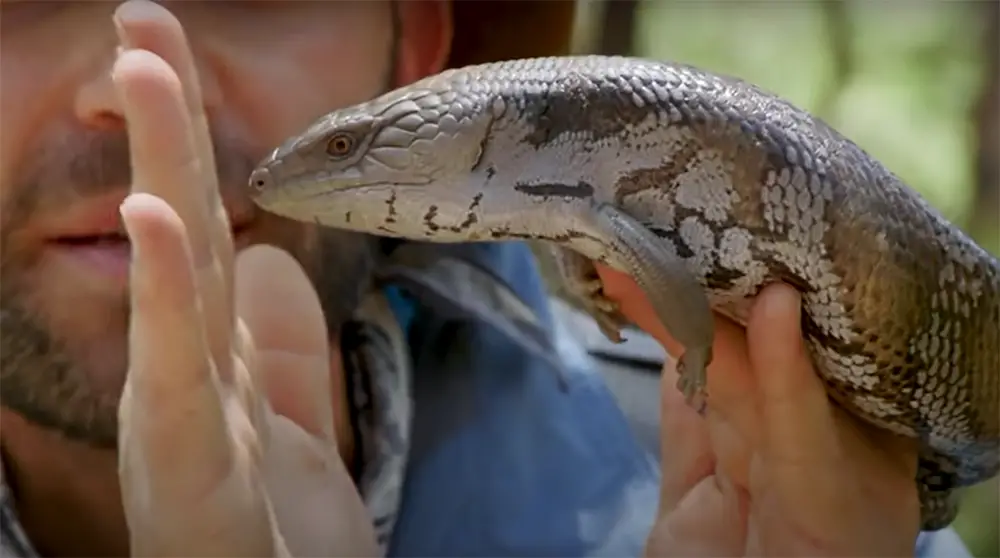
Blue tongue skinks are active during the day and like to sunbathe. Beardies are also active during the day, but they prefer cooler temperatures and spend much of their time basking in the shade.
Personality
Blue tongue skinks are not social animals and prefer to live by themselves.
Bearded Dragons, like other beardeds, are solitary animals that prefer to live alone. Bearded Dragons rarely show signs of affection towards their owners, but they may become accustomed to being handled and will sometimes allow themselves to be petted.
When it comes to personality, blue tongue skinks and Bearded Dragons could not be more different. Blue tongue skinks are active and curious, while Bearded Dragons are shy and reserved.
Defense Mechanism
Bearded Dragons have a few different methods of defense. When they feel threatened, their first response is to try and make themselves look as big and intimidating as possible. They will do this by puffing out their beards, flattening their bodies, and opening their mouths wide. If that doesn’t scare off the predator, they will resort to biting.
Blue tongue skinks also have a few different methods of defense. Their first line of defense is to try and intimidate the predator with their bright blue tongues. If that doesn’t work, they will hiss loudly and strike with their powerful tails. If all else fails, they will bite.
While both lizards have similar methods of defense, In general, Beardies are more dangerous than blue-tongues due to their larger size and unusual appearance. It’s essential to remember that Beardies are much more likely to bite than blue-tongues. Because their bites can be quite painful and even dangerous. Blue-tongues rarely bite humans unless they feel threatened or are provoked.
Diet
Both blue-tongues and Beardies are omnivorous, meaning they eat both plants and animals. However, blue tongue skinks require a higher percentage of animal protein in their diet than Beardies. A blue tongue skink’s diet should consist of 40% animal protein, while a bearded dragon’s diet should consist of about 20% animal protein. [4]
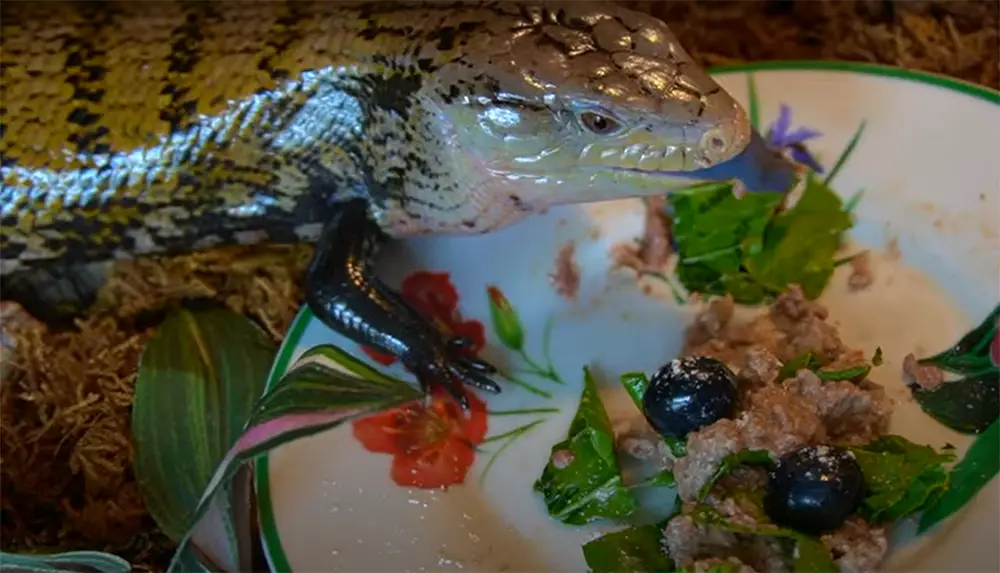
A good diet for blueys should include:
- Fruits and vegetables: Blueberries, mangoes, cantaloupe, carrots, sweet potatoes, dark leafy greens.
- Protein: Cooked chicken, turkey, beef, pork, or fish. Feed your blue tongue skink insects such as crickets, mealworms, and waxworms.
A good diet for Beardies should include:
- Fruits and vegetables: Apples, pears, figs, grapes, leafy greens.
- Protein: Crickets, mealworms, waxworms, earthworms, pinkie mice.
One important thing to note is that both of these lizards need to eat food that is high in calcium and vitamin D. Without these nutrients, they can develop a condition called metabolic bone disease.
There are a few things you should avoid feeding your lizard. Beardies should not eat wax worms or fireflies because they can be poisonous. Blueys skinks should not eat avocado because it can cause health problems.
Both of these lizards need to have access to fresh water at all times. You should change their water daily and clean their water bowl weekly.
Brumation
Blue-tongues and Beardies can both brumate. At this time, they will eat less, bask less, and generally be less active.
There are several reasons why your reptile might enter into a state of brumation. For one, it could be preparing for winter weather conditions. If the temperature outside starts to drop, your reptile’s body will naturally adjust and prepare for colder temperatures. In the wild, this would help them survive when food is scarce and there isn’t as much sunlight to bask in.
Another reason your reptile might brumate is that they’re getting ready to mate. For reptiles, this is usually done in the springtime when conditions are more ideal for reproduction.
Brumation can last anywhere from a couple of weeks to several months. During this time, it’s important not to disturb your reptile too much. If you need to handle them, do so gently and carefully.
If you think your reptile is going into brumation, there are a few things you can do to help them through it:
- Make sure they have a hiding spot where they feel safe and secure
- Keep their enclosure clean and free of any potential hazards
- Provide them with plenty of fresh water
- Monitor their weight and overall health closely
With a little preparation, you can help your reptile through their brumation period without any problems. Just be sure to keep an eye on them and contact your veterinarian if you have any concerns.
Breeding
The Bearded Dragons are oviparous, meaning they lay eggs.
The blue tongue skink is ovoviviparous, which means the young develop in eggs that are not deposited and remain in the mother’s body for further development. The mother then gives birth to live young.
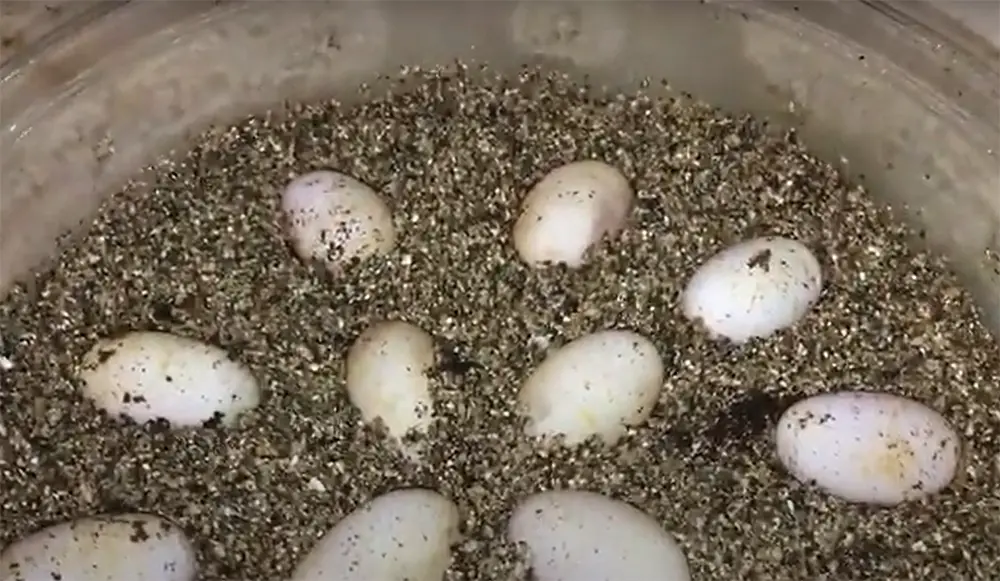
Bearded Dragons have a gestation period of about 60-90 days, while blue-tongues have a gestation period of about 180 days.
This means that Bearded Dragons can breed more frequently than blue tongue skinks.
Blueys also generally have fewer offspring per clutch (between two and eight) than Bearded Dragons (between ten and twenty).
Both species are known to be very good parents.
Cleanliness
Bearded Dragons are generally considered to be much cleaner pets than blue tongue skinks. They will often groom themselves, and their enclosure does not require as much upkeep as a blue tongue skink’s would.
Blueys need a little more help when it comes to cleanliness. You should clean and disinfect your animal’s enclosures every two weeks. This means cleaning every day and doing a more thorough job every two weeks. Because they tend to defecate in their water bowls and substrate.
If you are looking for a low-maintenance pet in terms of cleanliness, then a bearded dragon is probably the better choice.
Suitability
If you’re looking for a lizard that will be content to lounge around your home, the blue tongue skink is probably a better choice. Bearded Dragons are active lizards and require a lot of space to roam. If you have the room to provide them with an enclosure that is at least 50 gallons, then a bearded dragon might be a good fit for you. Blue Tongue Skinks can live happily in much smaller enclosures.
Bearded Dragons are also better suited for handling than blue tongue skinks. Blue Tongue Skinks can be nippy when they feel threatened or stressed, but Bearded Dragons tend to be more docile creatures. If you have small children who want to help take care of your pet lizard, a bearded dragon might be a better choice.
Blue Tongue Skinks do have one advantage over Bearded Dragons, however. They are much less likely to carry Salmonella bacteria than their bearded counterparts. This is important to consider if you have young children or immunocompromised family members in your home.
Costs
The cost of a Blue Tongue Skink is going to be cheaper than the Bearded Dragon. A Blue Tongue Skink can cost anywhere from $150-$250 depending on the form while a Bearded Dragon will set you back $30-$100. If you want a morph or a more rare color of Blue Tongue, the price will go up. The same goes for Bearded Dragons, with prices reaching as high as $1000 for some morphs.
Ability To Keep in Groups
Bearded Dragons, for example, tend to be solitary creatures. In the wild, they live and forage alone. They don’t associate with other Bearded Dragons unless it’s mating season. [5]
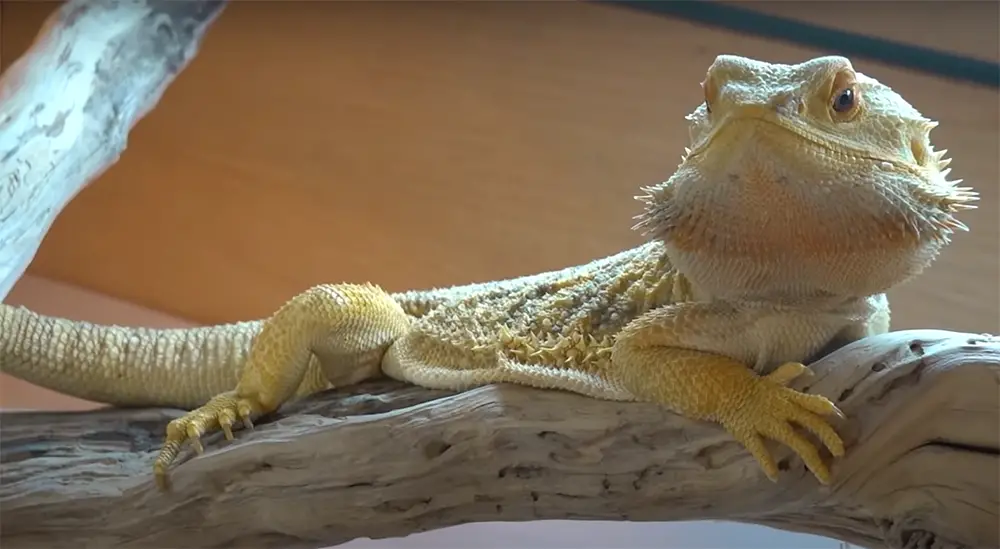
Blue tongue skinks are solitary too. But, they’re not as territorial. So, if you have the space, you can keep more than one blue tongue skink in the same enclosure. Just know that you might see some fighting for dominance every now and then.
Can You Keep Blue Tongue Skink and Bearded Dragon Together?
The quick answer is no, you cannot keep a Blue Tongue Skink and Bearded Dragon together. The two species come from different parts of the world and have different natural behaviors and needs.
FAQ
Can blue tongue skinks eat bearded dragon food?
No, blue tongue skinks cannot eat bearded dragon food. The two species have different dietary needs and requirements.
Can Bearded Dragons eat blue tongue skink food?
The answer is no. While a bearded dragon could technically survive off of a blue tongue skink’s diet, it would not thrive and would likely become sick over time.
How can you tell the difference between a bearded dragon?
There are a few key ways to tell the difference between a bearded dragon and blue tongue skink. First, look at the size of the animal. Bearded Dragons can grow up to 24 inches in length, while Blue Tongue Skinks only reach about 16 inches. Second, examine the lizard’s tail. A blue tongue skink’s tail is much thicker than a bearded dragon’s tail. Finally, take a close look at the head. Bearded Dragons have triangular heads with ridges running down their back, while blue tongue skinks have more rounded heads without these ridges.
Are blue tongue skinks aggressive?
No, blue tongue skinks are not aggressive. They are actually quite docile and make great pets. However, they can be nippy if they feel threatened or scared. It is important to handle them frequently so that they become used to human interaction and do not view humans as a threat. [6]
Beardies, on the other hand, can be very aggressive. They are known to bite and even tail whip their owners if they feel threatened. Bearded Dragons should only be handled by experienced reptile owners who know how to properly handle them.
What is toxic to blue tongue skinks?
Some substances are toxic to Blue-tongues, and this includes a number of common household items. Cigarette smoke, for example, can be fatal to these lizards, so it’s important to avoid smoking around them. Certain cleaning products and pesticides can also be harmful, so it’s best to do your research before using any kind of product near your blue tongue skink.
In general, you should always err on the side of caution when it comes to what you feed your blue tongue skink. Some fruits and vegetables can be dangerous for them to eat, so it’s important to consult a veterinarian or reptile specialist before feeding anything new to your lizard. In general, though, blue tongue skinks enjoy a diet that consists of a variety of fruits, vegetables, and insects.
If you think your blue tongue skink has been exposed to something toxic, it’s important to seek professional help immediately. These lizards are fragile creatures, and even exposure to a small number of toxins can be deadly.
Useful Video: Bearded Dragon Vs Blue Tongue Skink | Which Is The Best Pet Lizard For You
Conclusion
So, what are the differences between blue tongue skinks and Bearded Dragons? Blue Tongue Skinks are more docile and easier to care for than Bearded Dragons. They also have a longer lifespan and can live up to 20 years with proper care. Bearded Dragons, on the other hand, are more active and require more attention. They only have a lifespan of about 12-15 years.
Both reptiles make great pets but it really depends on your lifestyle and what you’re looking for in a pet as to which one is right for you. If you’re looking for a low-maintenance pet that doesn’t require much attention, then a blue tongue skink is probably your best bet. But if you’re willing to put in the time and effort to care for a more active pet, then a bearded dragon might be a better choice.
Hope this was helpful in answering some of your questions about the differences between these two popular pet lizards! Thanks for reading!
References:
- https://www.petmd.com/reptile/species/blue-tongued-skink
- https://oddlycutepets.com/bearded-dragon-weight-chart
- https://www.bluetongueskinks.org/forum/viewtopic.php?t=29327
- https://azeah.com/lizards/basic-care-blue-tongue-skinks
- https://www.zoolabuk.com/post/do-bearded-dragon-s-really-have-a-3rd-eye-and-other-questions
- https://www.thesprucepets.com/pet-blue-tongued-skinks-1236897#:~:text=Be%20advised%20that%20although%20skinks,hiss%20and%20expose%20their%20tongues

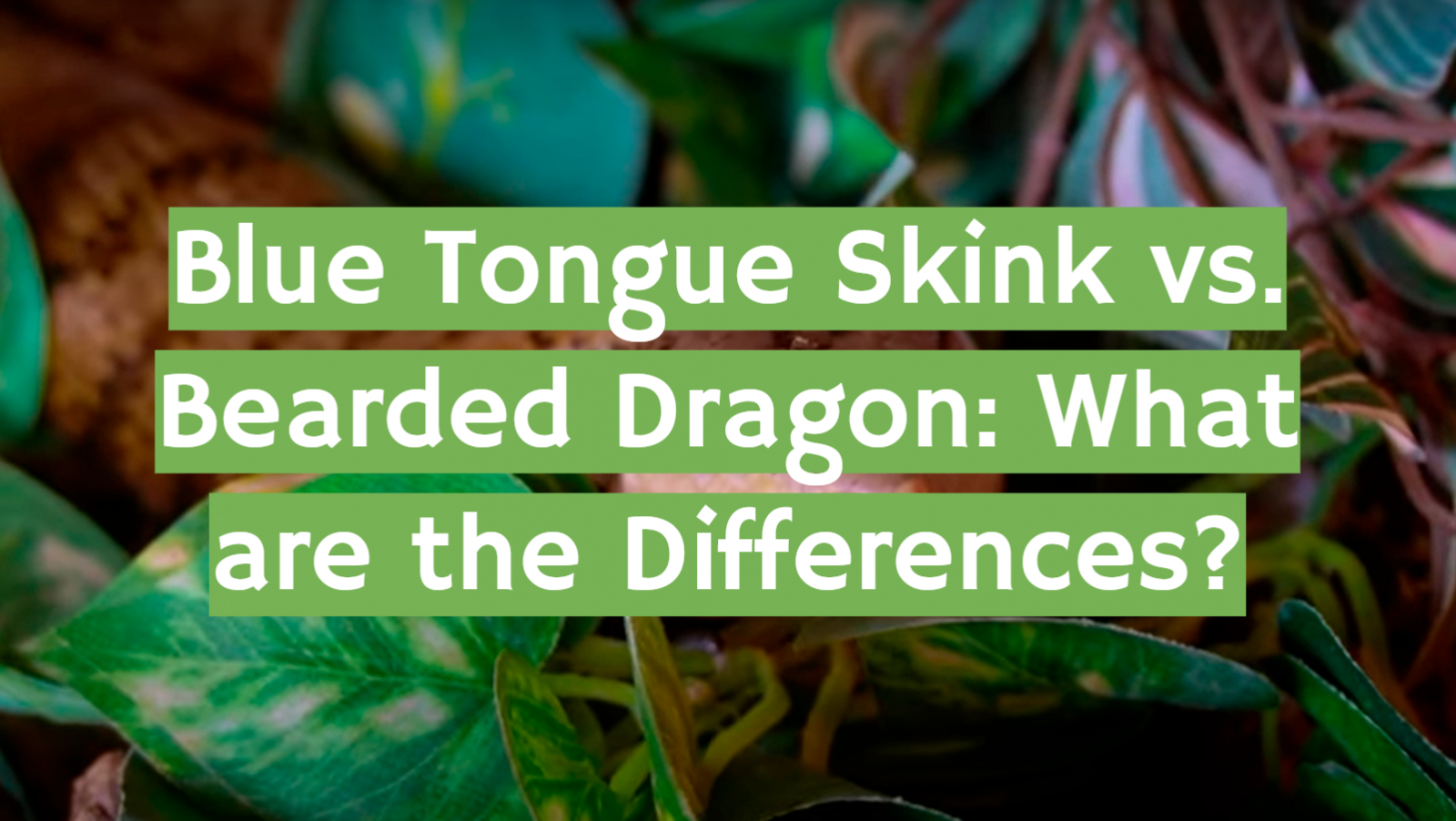
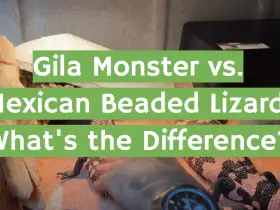

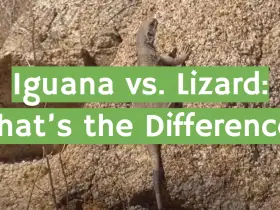
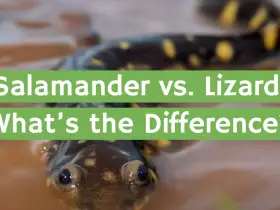
Leave a Review